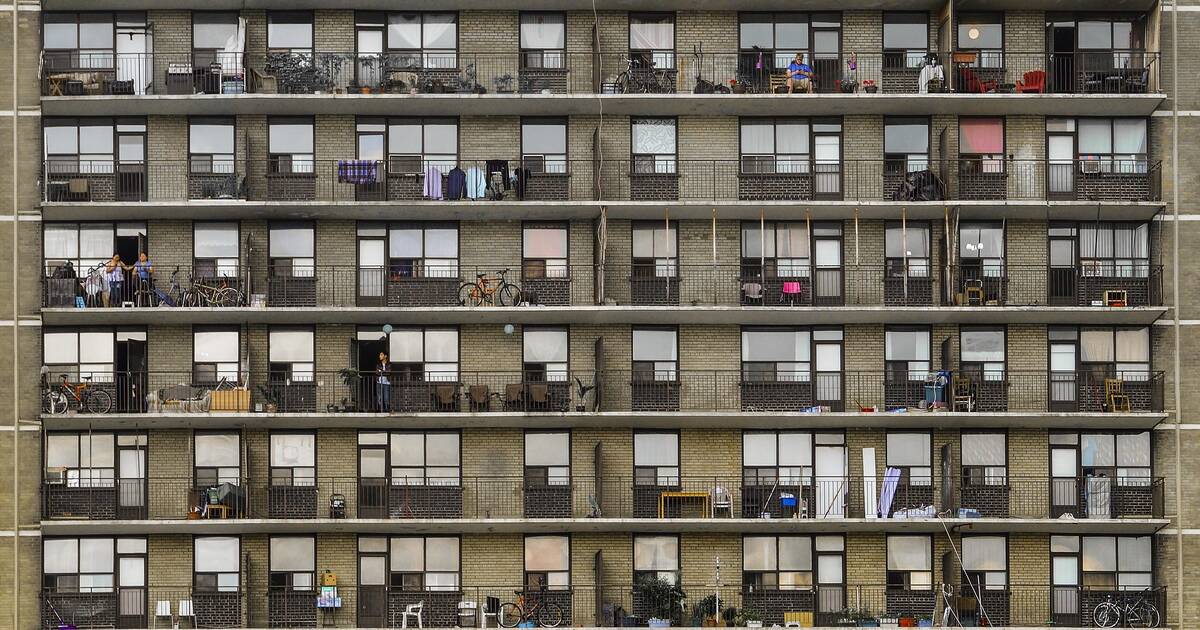
In an effort to better protect Toronto tenants from negligent or otherwise unscrupulous landlords, City Council just voted to amend the municipal code governing apartment buildings — and by quite a bit.
Among a whole host of changes aimed at strengthening tenant rights is a new requirement for landlords to prominently display a copy of the results from their building's latest formal evaluation, both on a tenant notification board and upon request to anyone who asks for it.
Further to that, the city's Planning and Housing Committee recommended creating "a rating system similar to the City's 'Dinesafe' program" that requires landlords to post colour-coded signs displaying their city-determined rating "in a prominent, publicly identifiable location."
As with DineSafe, the ratings would also be published on a dedicated RentSafeTO website.
Council just voted unanimously to beef up RentSafe. (Even Pasternak and Minnan-Wong, the only councillors who voted earlier to punt the report back to committee.) pic.twitter.com/gK1jbrHaeh
— Lauren Pelley (@LaurenPelley) November 27, 2019
It's an interesting concept, but one that has raised many questions about enforcement, and how much tenants will actually be impacted.
After consulting with various tenant and advocacy organizations, city staff raised some concerns about the stigmatization of tenants in buildings that landed very public red cards.
"Staff note that labelling apartment buildings with a red or yellow colour-code rating (which is associated with failure or higher-risk conditions) may be confusing as it may seem that the building is uninhabitable," reads a supplementary report from Municipal Licensing and Standards that went before council this week.
"As well, posting a colour coded sign that is visible from the outside of a building may cause stigmatization of the tenants who have homes there. This type of program could disproportionately stigmatize low-income individuals and families."
City staff also pointed out that building inspections would need to be more frequent in order to keep colour codes up to date, which would have cost impacts. Currently, the RentSafeTO program only requires inspections every one, two or three years.
.@anabailaoTO gets it. A public green/yellow/red rating sign on the building doesn't stigmatize tenants. BEDBUGS DO! Not being able to host friends and family due to lack of repairs is a bigger stigma than a #rentsafe sticker on a building door pic.twitter.com/toZ5enGKTj
— Toronto ACORN (@TorontoACORN) November 27, 2019
Regardless, City Council voted unanimously on Wednesday to direct the Executive Director of Municipal Licensing and Standards to create the colour-coded, DineSafe-style program.
The program will now be fleshed out fully and presented to the Planning and Housing Committee early next year.
Most of the changes to Toronto's municipal code, as related to apartment buildings, will come into effect on March 1, 2020.
Along with the measures listed above, they include:
- Requiring landlords to provide additional information on pest management activities, the RentSafeTO program and any violations of the Ontario Fire Code via tenant notification boards within their buildings.
- Giving tenants mandatory notice of regular visits by RentSafeTO staff at least 30 days prior to building audits "with appropriate contact information for staff, or registering complaints."
- Requiring landlords to post information on tenant notification boards about air conditioned spaces in the building, as well as "other places on the property that offer relief from uncomfortably warm indoor temperatures, including a cooling room or shaded area."
- Requiring that landlords "develop and maintain a capital plan for each rental building that includes a comprehensive 5-year forecast extending beyond major capital repairs." This would include plans for common element improvements or any other anticipated work that would impact a tenant's access to or enjoyment of their unit.
This is a great start, rent control is next go go go!
— Sam Hook (@CaptainSamHook) November 28, 2019
The city has also agreed to allocate $60,000 toward increasing awareness of the RentSafeTo program, including "direct door-to-door engagement regarding tenant rights and responsibilities."
In addition to enhanced tenant protections, a new tool will be introduced for the city to recover costs associated with providing Emergency Social Services when a building must be evacuated and a landlord doesn't provide re-housing for tenants.
Fees for landlords in such cases will be variable, and assist the city costs related to lodging and administration when "a substantial portion of a building" that is three or more stories high with ten or more units "becomes uninhabitable."
Social housing providers would be exempt from such fees, but they would most definitely apply to the owners of a property like 650 Parliament St., where fire damage has kept roughly 1,000 people out of their homes since August of 2018, costing the city millions of dollars in rehousing fees — and counting.
by Lauren O'Neil via blogTO

No comments:
Post a Comment